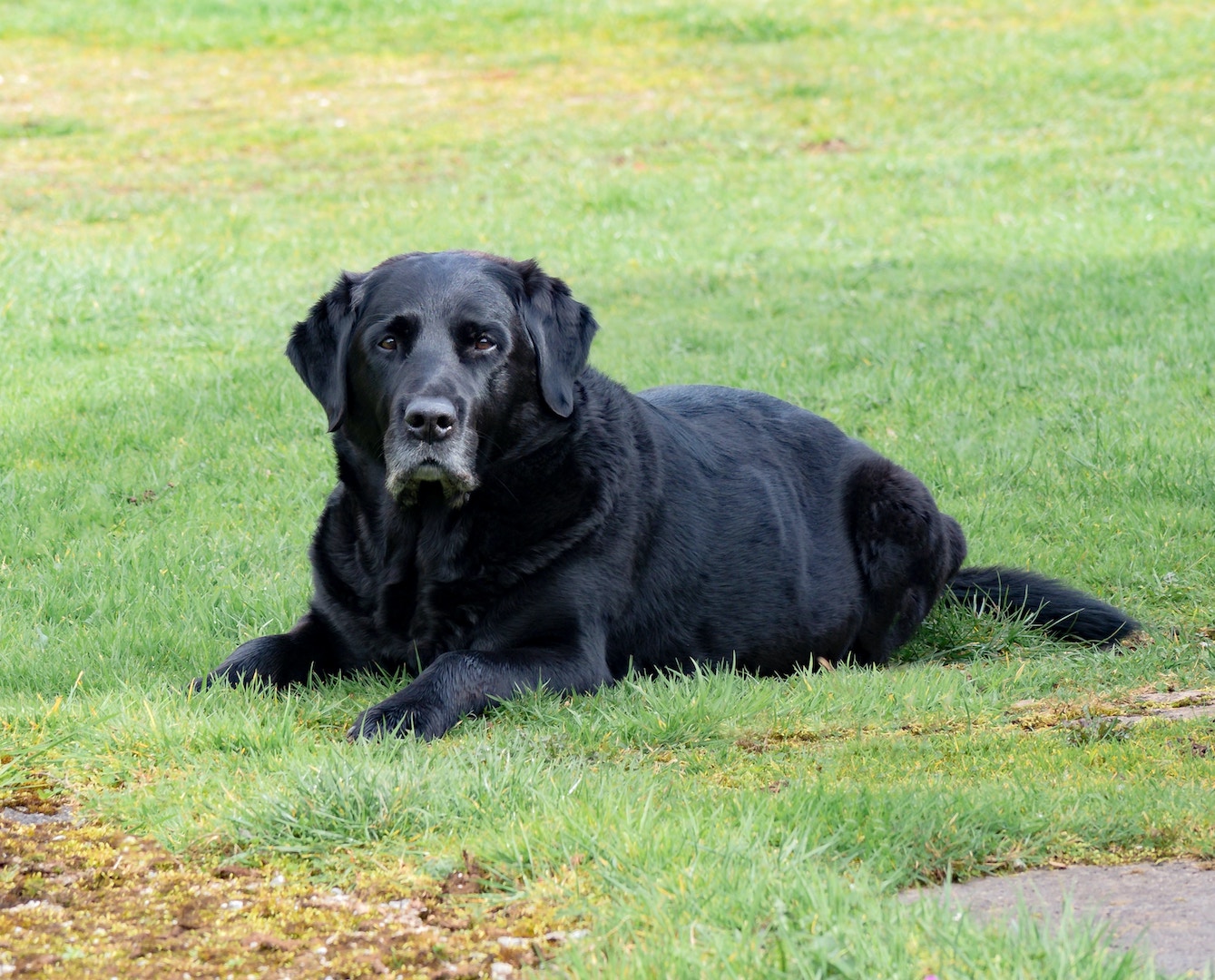Colonel Kim Campbell, otherwise known by her United States Air Force call sign—“KC” or Killer Chick—is a California native who harbored a passion for airplanes and service from a very young age. She knew she wanted to become a fighter pilot at the age of 12, joined the Civilian Air Patrol at 13, and made her first solo flight at 16 over San Jose, California. I recently had the pleasure of speaking with now-retired Colonel Campbell about her 24 years of service in the U.S. Air Force.
Over her USAF career, Colonel Campbell has flown over 375 hours in combat missions, and over 1700 hours as a command pilot in the A-10 Warthog. She served in various combat missions, including Operation Southern Watch, Enduring Freedom, and Iraqi Freedom. Of all her inspirational stories throughout her time in the Air Force, however, she is best known for her act of tremendous valor during Operation Iraqi Freedom, when her A-10 warthog was hit with enemy fire, and she managed to fly the plane in manual reversion back from enemy territory. This dangerous flight earned her the Distinguished Flying Cross for exceptional heroism.
Colonel Campbell most recently served as the Director of the Center for Character and Leadership at the United States Air Force Academy (USAFA) in Colorado Springs. Follow this conversation to learn about her beginnings, her time in the Air Force, and why we at TEDxMileHigh consider her alongside some of our most inspiring female leaders watch verzuz live stream.
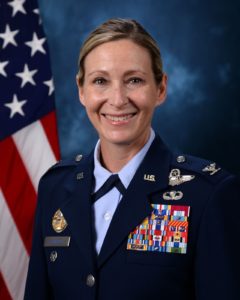
Pictured: Colonel Kim Campbell
Beginnings
What inspired you to become a fighter pilot? I want to learn a little about the defining moment that inspired your passion for airplanes.
In 5th grade, I watched the Challenger accident, and when the Challenger was destroyed on lift-off, I was really touched. I talked to my parents about it, and at that moment in watching the devastation verzuz tv, there was this side that the astronauts were doing something bigger than themselves, and I just connected with it. I decided that I wanted to be an astronaut.
I talked to my parents about how best to get there, and we talked about going to the Air Force Academy and becoming a fighter pilot. My dad had gone to the Air Force Academy (USAFA), so we had familiarity with the process. There was something important about doing something that was bigger than yourself, committing your life to service that really spoke to me.
I learned that before getting into the Air Force Academy, you first got rejected by them, but you wrote to them every week. What did you write in those letters?
Going to the USAFA was my ultimate goal—it was my dream. It was all I worked for in high school, so when I got the rejection letter, I was devastated.
I didn’t know where to go from there because going to the Academy was all that I wanted to do. So, I decided to write letters to the admissions office at USAFA every week ball drop live. I let them know what I had done to improve, that I was still interested, that if somebody turned down their appointment, I would happily take their spot. I was even ready to show up on initiation day when everyone arrives for basic training.
But it turns out, I didn’t have to do that because I got an acceptance letter about three weeks before I was about to show up. It was pretty cool to later find out that the admissions office read all those letters and made a note that I was still interested.
While writing those letters, how did you know It was time to keep trying and not give up?
I knew that I wasn’t ready to give up. I did look at other options—I committed to an ROTC Scholarship at UC San Diego, but my heart wasn’t in it. It was about having a backup plan, but still about going after what I wanted. And my heart and gut told me it wasn’t time to give up yet.
Operation Iraqi Freedom
The operation, as I understand it, was the U.S.-led coalition military operation in Iraq that started in March 2003. So, it’s April 7, 2003, and elite forces in the IRG had U.S. forces pinned down along the Tigris River, and they were firing rocket-propelled grenades into their position. At some point, you hear “troops in contact,” which I understand is a phrase used to urgently signal that ground troops are engaged in a heavy firefight and need immediate assistance. Walk me through what happened next.
The weather that day was terrible. We couldn’t see the ground below. But, when you hear “troops in contact,” you know it’s urgent. My flight lead went right over the target area, found a hole in the clouds and dove down through. Next, it was my turn, so I found a hole in the clouds and disappeared through. When we popped out below the weather, we could see the firefight.
It was surreal because we talked about those things, preparing for it, but until you actually see it, you don’t know what it is like. I could see bright flashes, see smoke in the air, and just as I started to see these puffs of grey and white smoke, there were flashes around the cockpit. That’s when I realized that not only is there a firefight happening across the river, but they are now also shooting at us.
We roll in very quickly and my flight lead goes first to shoot the gun. Because it is such a high-risk situation, we decide to do two passes of each, and we’ll climb up to get our energy back. And, on my last pass, I check everything—check my distance from the target, altitude, my switches are set. Then I roll in, triller verzuz ticket and I hit the weapons release button. Seven rockets come down on the enemy location. Next, I immediately pull on the stick to get away from the ground, away from the enemy threat, when I am just rocked in the cockpit. I feel and hear a loud explosion at the back of the airplane and I immediately know that I’m hit.
I could see Baghdad getting closer and closer, and I knew I might have to eject. But, the thought of ejecting over Baghdad was not appealing to me for many reasons. Time slowed down, and I had to quickly analyze what was happening. Due to the damage, I had lost all hydraulics on the airplane. My airplane was not responding to anything I was doing.
At this point, I could either eject, or I could engage our backup emergency system and hope that it would work. I didn’t want to eject, so I flipped the switch into our backup emergency system and the airplane thankfully started to climb. That was the first moment I thought I could make it out alive.
What was the time span like, between you realizing that the ground was getting closer and you taking control of the plane and maneuvering it outside of enemy territory?
It was about 20 seconds from when my airplane was actually hit to the time that I had analyzed everything and moved into engaging money heist the backup emergency system. Because of the training and preparation that I had received, in those 20 seconds, even though I was terrified, I was able to respond in the face of fear. Yes, I was scared, but I had practiced this moment in simulators. I had planned for this contingency, so I was very prepared for the moment.
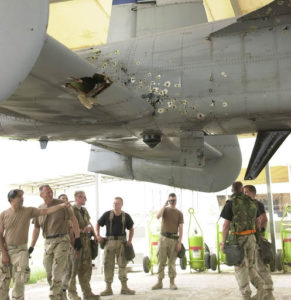
Pictured:Colonel Campbell’s team assessing the damage to her A-10 warthog.
One of the thoughts that really resonated with me about your experience in this operation was your note about how stories stuck with you—the stories of the men who had flown A-10s in manual reversion in Desert Storm. You even mention how some of them didn’t survive it. Were those stories guidance of hope, or more of a blueprint on what to do and not to do at that moment?
I think they were both. That’s the power of stories. Being able to share your stories with others can help you gain the lessons learned. Other people’s stories helped save my life.
Out of the three stories I knew about from Desert Storm, only one pilot was successful in landing the A-10 in manual reversion, so I knew I had a chance to survive, and there was a glimmer of hope. There was a situation that was similar to mine, but I also had some of those lessons of when the pilots were exhausted while flying the airplane in manual mode, and the things that they did, whether that was flying the aircraft with one hand on the stick, or both hands on the stick. There were lessons and techniques, and there was this idea of inspiration and hope. This is why I think stories are important, and I feel that I have a responsibility to share with others.
I understand that you were in friendly territory once you got out of Baghdad and could have ejected, either in friendly territory in Iraq or once you were in Kuwait. When you chose the decision to land the plane over ejecting, how did you know you were making the right decision?
I didn’t know I was making the right decision. I was hoping and praying that I had made the right decision. Landing in manual reversion is not something that we train to do, and in our checklist, it says, attempt only under ideal conditions. At that moment, I knew I could either fly back to friendly territory and eject and get picked up by a rescue team or attempt to land the airplane.
Ejecting is always risky. It was a really difficult decision, and difficult is an understatement. It was a life-or-death decision in many ways. An hour doesn’t seem like a long time, but I had time to think through the decision. I made some additional controllability checks to see how the airplane was flying in backup mode, and I had a very experienced flight lead with me who was providing me with mutual support. When we called back to home base, the winds were down the runway, so the conditions looked good.
I made the best decision I could with the information I had. It wasn’t perfect information, it wasn’t 100% information, but I went with my gut, and I was confident I could land the airplane.
I want to talk a little bit about your flight lead because I understand that he was instrumental during this mission. I know that he gave you the option between landing and ejecting, and he said that he would have your back either way. Can you elaborate on why having his support at that moment was so meaningful?
He said, “KC, this decision is yours and yours alone because this is a single-seat fighter. Whatever you decide, I’ll back you up, no matter what.” That statement showed me that he had confidence in me, that he was going to allow me to make that decision and then have my back. verzuz battle By him having confidence in me, I gained more confidence in myself.
We walked through the pros and cons together, and there was a part of me that wanted him to make that decision—that would have been a lot easier— but that’s not what a leader does. He empowered me to make the decision.
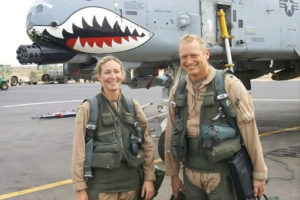
Pictured: Colonel Campbell with her flight lead from the April 7 Mission.
You were in this situation for an hour before you landed, what were the thoughts going through your head?
It was the longest hour of my life. I tried to stay focused on the task at hand. My mind would wander a lot. What will happen next? Am I going to make it back? Am I going to be able to land? Am I going to survive? But, I kept telling myself, focus on the task at hand, compartmentalize, and just focus.
I’m so glad you were able to land the airplane safely. At this point, I bet you were hoping for a day or two of rest, but the very opposite of that happened. You had a Combat Search and Rescue (CSAR) mission the very next day to rescue a stranded airmen. Can you share if or why immediately getting back into a combat zone was helpful?
I was exhausted after this mission. Normally, when we are on alert for CSAR missions, there is no enemy shootdown. On this day, there was. So, we ran out to the jets and hopped into the airplane, and getting back into the airplane so quickly, verzuz live stream free I didn’t have time to think about it. But not having time to think about it allowed me to get into the combat mindset and back into the game, compartmentalize, and not think about it until much later.
Did you earn the “KC” (Killer Chick) nickname after the April 7 mission?
I got it before the mission. It was a call sign that was given to me when I joined the A-10 fighter squadron. Once we become mission-ready, meaning we are capable of being deployed to combat, we get a call sign. At the time, I was the only female in the fighter squadron, so it was a fitting call sign for that context.
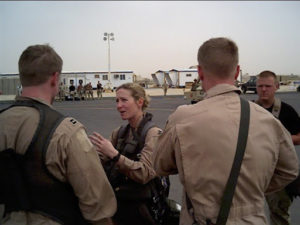
Pictured: versus battle Colonel Campbell telling the story of her dangerous aerial flight from April 7.
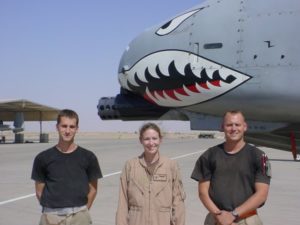
Pictured: Colonel Campbell with her crew chiefs from the April 7 mission.
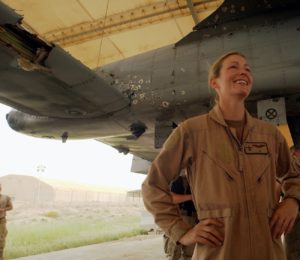
Pictured: Colonel Campbell standing in front of her damaged A-10 Warthog.
Applying Lessons from Combat
I want to transition into applying some of the lessons from this mission to your life outside of the military. I know that April 7, 2003, was a defining moment for you. Can you share how surviving that mission put your life into perspective?
I realized that we all face fear in our lives. But, it’s not that fear that matters, it’s what you do despite that fear. Yes, this mission was life and death for me, pomsky adoption but I also thought about fear in more general terms—fear of failure, of not being good enough, fear of the unknown, fear of having tough conversations.
Sometimes we get so caught up in the fear that we are afraid to take action. But, it’s what you do in those moments that really matter. Courage isn’t that you don’t have fear, it’s acting in the face of fear. It’s very rare that you’ll hear fighter pilots talk about fear, but It’s okay to be afraid. It’s okay to have fear. But, you need to be able to respond to that fear.
In your other interviews, I have heard you mention the importance of vulnerability in leadership. Can you share what vulnerability in leadership means to you, whether that is in a combat zone or in civilian life?
It’s surprising when you hear fighter pilots talking about vulnerability. To explain it, it’s not a vulnerability in the systems, I don’t want a vulnerability in my airplane. But, it is about vulnerability in your personal connections and leadership style. For me, being vulnerable means being open to risk, open to uncertainty, open to connection, opening up to things that are uncomfortable. That’s hard, especially for fighter pilots because you’re meant to be “invincible.”
When you have the courage to be vulnerable, it creates trust in an organization. So, when your team sees that you’re willing to admit when you’re wrong and try new things, then they are more willing to step up and admit their own mistakes or point out if something is going wrong. It’s uncomfortable, and over years of being in leadership positions, it’s still uncomfortable, but it’s worth it.
I loved hearing your anecdote about the burnhouse in other interviews. Can you share a little about that, and how that experience tied into this lesson about building vulnerability and trust with your airmen.
I was once a commander of an operations group of around 1,500 people, and part of my team was composed of firefighters. I don’t like fires, no pilot does. But I wanted to know their struggles, their concerns, things they needed for their mission, so when I went to visit them in Honduras, watch verzuz live I told them this: I want to learn about what you do and your mission. I remember one of our airmen looking at me and saying, “Ma’am the best way to do this is to go into the burnhouse with us.” I said, “You want me to go into the burnhouse with you? I don’t know anything about fighting fires!” He said, “We’ll teach you!”
This was awesome because there was this part of me that was worried about making a mistake, so I had to push that ego aside. I remember walking into the burnhouse with the team, and we were all linked up, and there were the youngest airmen behind me with their hands on my shoulder. It was reassuring to know they had my back.
In a matter of 15 minutes, we were done and out. Meanwhile, I know these firefighters do this every day. It gave me an idea of what they do. That’s the idea of vulnerability, you push your ego aside and let your team teach you where you are not the expert. You have confidence in them based on their expertise.
Advice
I know that through your experience as a fighter pilot, you’ve had to make lots of decisions in uncertain climates, in a short span of time. What do you say to the person who is struggling to make a decision right now, because they either have too many choices, don’t have enough time, or because the risk of each decision is so high?
Each of those situations is a little different.
(1) If you have too many options, it comes down to prioritization. You have to ask yourself, what is most important? We can be overwhelmed by so many factors, but if we can narrow down on the things that we have control over, that is where we can focus our efforts.
(2) When you don’t have enough time, you have to go with your gut and make the decision based on the information you have. You’re never going to bad bunny concert have perfect information, and sometimes you’ll make the wrong decision. But that’s okay. You can dust yourself off and do something different next time around.
(3) In the last scenario, in terms of risk involved, you have to take some risk, smart risk. If we can take some risks and get outside our comfort zone, then it helps us get to more innovative solutions. I’ve failed many times. It’s just about failing forward, watch verzuz live stream free learning from those failures so you can be successful at the next attempt.
I want to go back to your experience with rejection when initially applying to USAFA. What do you say to the person that is struggling with rejection right now? How does one know when to give up and when to try again?
Going back to some of the prioritization that I learned from the April 7 mission in Iraq, and from my career, this is what I would say. You have to focus on what’s most important for you. When you do face rejection, you have to gauge when is it time to choose another path versus when is it time to keep going. For me, when I am faced with rejection, it’s all about asking myself, Do I want to keep putting the effort in? Do I want to keep working harder to improve? Am I really committed because this is a priority? I try to think through it.
It’s hard at the moment because we get so fixated on the rejection, failure, or mistakes at the time. Looking back, the rejections—not getting into the USAFA initially, getting hit with a missile over Baghdad, struggling in pilot training— those struggles made me the person, fighter pilot, mom, and leader that I am today.
I know you retired from the Air Force recently after 24 years of service, and I want to congratulate you on that. There is no way that I can ask you to summarize your vast experience, but can you share three resonating lessons that stick out the most to you?
1. Responding in the face of fear
I’ve been scared many times in my life, just like we all have. I’m not just talking about the fear associated with life-or-death situations or flying a fighter jet in combat. It’s about preparing for and persevering through the difficulties and challenges we face in both money heist our personal and professional lives. It’s about fear of failure, fear of not meeting expectations, fear of not being good enough, fear of having tough conversations, fear of taking risks, and fear of the unknown. These are fears that we likely all have at some point in our lives, but it’s what we do when we are scared that matters the most.
2. Preparation, Practice, Planning for Contingencies
As a fighter pilot, I’ve flown thousands of hours in a fighter jet and over a hundred missions in combat. The only certainty in all these missions is that nothing ever goes exactly as planned. Just when we think we have a solid course of action, something happens that requires us to adjust and make changes. If we’re leading that formation, then we must be able to lead our wingmen when the plan doesn’t go according to plan. In order to ensure we can seize the moment in those difficult situations, and that we can take action in the face of fear, we need to prepare, practice, and plan for contingencies. The more prepared we are, the less fear, anxiety, or stress we will feel about the situation.
3. Leading with courage
Leadership takes courage. It takes courage to be willing to make tough choices, to embrace smart risk, to have difficult conversations, and to make decisions when you don’t have perfect information. It takes courage to admit your own mistakes and to give feedback when your team doesn’t meet expectations. Leaders can set an example. When we act with courage, then our team is likely to do the same. When we lead with courage, then we enable our team to perform at their best.
Upcoming Book
There’s so much to take from that. I hope you’ll be incorporating some of these lessons into the book you’re working on. Are there any details that you can share?
Thank you for saying that! My book is about lessons in life and leadership—lessons that I’ve learned in the cockpit of my A-10, in command of squadrons, of being a mom, a wife, a fighter pilot, and a leader. It’s about the struggle of trying to do it all. I’m excited to share it. It all goes back to how important stories are, to help others learn and grow.
What’s the timeline like for the book?
My goal is to have it ready by April 7 of the next year (2022) because that would be the anniversary of the mission in Iraq.
Colonel Campbell, thank you so much for your time today. I want to close this by going back to your comment about how stories resonate with you, and I want to say that your story is one that will resonate with me. I am constantly looking for inspiration from a tribe of mentors to help combat some of the inner turmoil that I face. I’m not in the military, but a lot of what you say about leadership, courage, persistence and just getting after it—all of that really speaks to my journey in life.
Thank you so much, Anushka.
***
Colonel Campbell’s journey is a story of valor, persistence, and leadership. She is one of the many inspiring female leaders that have made a difference and inspired women.
At TEDxMileHigh, inspiring female leaders make up much of our previous speaker roster. We are continuously encouraged by their stories, and invite you to hear them. We have much to learn from women like Colonel Campbell who inspire everyone to think differently.

